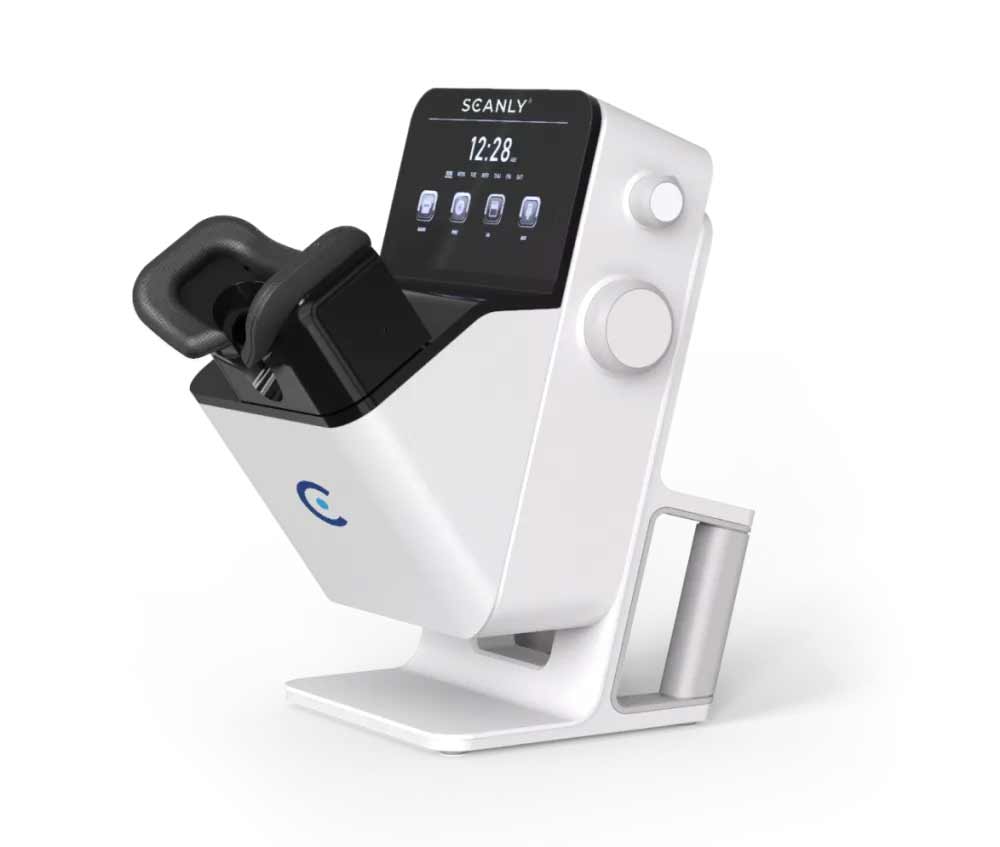 |
| For six months, data received from daily, remote self-imaging with the Notal Vision Home OCT was used by the researchers to manage eyes diagnosed with wet AMD and make decisions about the need for office visits. Photo: Notal Vision. Click image to enlarge. |
Personalized treatment algorithms have the potential to reduce the burden on patients, their caregivers, retinal clinics and healthcare systems. Personalized healthcare for wet AMD would require a treatment regimen based on each individual’s unique disease pattern per eye, treatment response per eye and medication durability per eye. Recently, studies of a patient-operated SD-OCT system from Notal Vision, to be called Scanly, demonstrated good feasibility and performance of daily self-imaging at home. A more recent study, published last week in Retina, investigated the impact of home OCT data to guide retina specialists in the management of wet AMD. Also last week, Scanly was granted de novo marketing authorization from the FDA.
In the study, the researchers compared the results from home OCT-guided management of wet AMD with findings from the same eyes managed with standard of care treatment regimens during a preceding reference period based solely on in-clinic OCT scans. The study demonstrated a significant reduction in treatment burden while maintaining stable VA. Nevertheless, the study involved a small cohort of eyes.
The researchers conducted this interventional trial to compare frequency of treatment and visual acuity (VA) for wet AMD patients before and during use of home OCT over a period of six months. It included 27 eyes (21 with a diagnosis of wet AMD and one converted during the study), of which 15 patients were monitored for six months, scanning each eye at 6.2 times per week and yielding 4,435 scans. Of these, 91.2% were eligible for artificial intelligence-based fluid volume quantification. Total number of monitoring weeks prior and during the study were 1,555 and 509, respectively. The mean number of weeks per injection before and during home OCT management were 8.0 and 15.3, respectively.
“The current study demonstrated that near daily self-imaging with the Notal Vision Home OCT enabled the successful management of eyes with wet AMD,” the authors wrote in their paper. “AI-generated fluid volume trajectories could be easily reviewed on a remote physician web viewer by treating physicians.”
The mean VA change before and during home OCT-based management was 3.5 letters and 0.0 letters, respectively, showing no significant impact on VA. This study showed a significant reduction in treatment burden by almost 50% while maintaining stable visual acuity.
“Not knowing the potential effect of home OCT on a loading period, remote monitoring could potentially eliminate some of the treatments,” the researchers suggested. “AI-based image analysis allows the extraction of actionable disease activity and treatment response insights from up-to daily high-density home OCT scans. These insights may prove essential for the integration of this new imaging modality in an efficient physician-led clinical decision-making process.
Holekamp HM, de Beus AM, Clark WL, Heier JS. Prospective trial of Home OCT guided management of treatment experienced nAMD patients. Retina. May 22, 2024. [Epub ahead of print]. |


